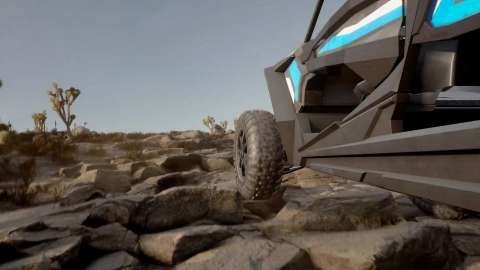The Defense Advanced Research Projects Agency (DARPA) has awarded Intel Federal LLC with support from Intel Labs and its collaborators, the Computer Vision Center Barcelona, Spain, and the University of Texas at Austin, the opportunity to develop advanced simulation solutions for off-road autonomous ground vehicles. The Robotic Autonomy in Complex Environments with Resiliency - Simulation (RACER-Sim) program aims to create the next generation of off-road simulation platforms to significantly reduce the development cost and bridge the gap between simulation and the real world.

"Intel Labs has already made progress in advancing autonomous vehicle simulation through several projects, including the CARLA simulator, and we're proud to participate in RACER-Sim to continue contributing to the next frontier of off-road robotics and autonomous vehicles. We brought together a team of renowned experts from the Computer Vision Center and UT Austin with the goal of creating a versatile and open platform to accelerate progress in off-road ground robots for all types of environments and conditions."
- German Ros, Autonomous Agents Lab director at Intel Labs
Why It Matters:
In the context of autonomous driving, the gap between on-road and off-road deployment is still very significant. Many simulation environments exist today, but few are optimized for off-road autonomy development at scale and speed. Additionally, real-world demonstrations continue to serve as the primary method to verify system performance.
Off-road autonomous vehicles must deal with substantial challenges, including a lack of road networks and extreme terrain with rocks and all types of vegetation, among many others. Such extreme conditions make developing and testing expensive and slow. The RACER-Sim program aims to solve this problem by providing advanced simulation technologies to develop and test solutions, reducing deployment time and validation of AI-powered autonomous systems.
How It Works:
RACER-Sim includes two phases over 48 months with the aim of accelerating the entire research and development process for designing off-road autonomous ground vehicles. In phase one, Intel's focus is to create new simulation platforms and map generation tools that mimic complex off-road environments with the highest accuracy (e.g., physics, sensor modeling, terrain complexity, etc.), at scales never seen before. Creating simulation environments at scale is a process that traditionally requires significant resources and is one of the biggest challenges in simulation workflows. Intel Labs' simulation platform will enable customization of future maps, including the creation of massive new environments covering more than 100,000 square miles with just a few clicks.
During phase two, Intel Labs will work with RACER collaborators to accelerate the research and development process by implementing new algorithms without the use of a physical robot. Then, teams will validate the performance of the robot in simulation, saving significant time and resources. Phase two will also include the development of new sim2real techniques - the concept of training the robot in simulation to acquire skills and then transferring these skills to a corresponding real robotic system - enabling the training of off-road autonomous ground vehicles directly in simulation.
Intel expects these new simulation tools to significantly improve the development of autonomous systems using virtual testing, which reduces the risks, costs, and delays associated with traditional testing and verification protocols. In the future, the simulation platform will go beyond validation to create AI models ready for implementation in the real world.
The Small Print:
This research is funded in part by the U.S. Government. The views and conclusions contained in this document are those of the authors and should not be interpreted as representing the official policies, either expressed or implied, of the U.S. Government.
ⓒ 2025 TECHTIMES.com All rights reserved. Do not reproduce without permission.




